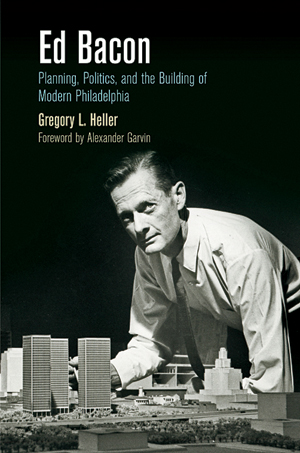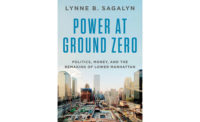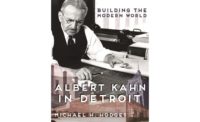Power Broker
Ed Bacon was born, raised, and—except for a brief stint in Flint, Michigan—spent his long career in Philadelphia. Gregory L. Heller notes in fascinating detail every post and position Bacon held, every colleague, boss, opponent, mayor, and governor who crossed paths with him. More than a biography, this book is the story of mid-20th-century planning, complete with the passions and dogma that attended it, as told through one man in one city.

In doing this, Heller answers the question still posed about Bacon eight years after his death: What did he really do? He graced the cover of Time magazine in 1964. He fought, argued, and pleaded for inner-city highways (until they no longer seemed the answer), for new communities, and for social justice, and did so in a variety of positions (e.g., director of the Philadelphia City Planning Commission). He was often strident and arrogant, but always in the service of planning as a serious endeavor and Philadelphia as a model for what should be done. Part of Bacon's legacy, or lack thereof, is that he was forever having to fight for power in some new administration or fend off an opponent. Heller, who is a consultant on economic development and urban issues, spent many hours while at the University of Pennsylvania interviewing Bacon.
Bacon's career was contemporaneous with Robert Moses's and Ed Logue's, both of whom understood the vagaries of democratic governance better than he. Moses wore many hats simultaneously, making him very difficult to dislodge in a single blow. He also learned that the tolls on his bridges and tunnels were perfect sources of funds for subsequent projects, obviating the need to appear hat in hand before some legislative body. Logue understood that planning without the power to implement was thin gruel. When New York Mayor John Lindsay offered him the position of development director, Logue turned it down because he couldn't also be chairman of the City Planning Commission. Bacon always had to scrap for power and money.
Bacon's architectural legacy is spotty. He oversaw the demolition of the abandoned “Chinese Wall” of elevated railroad tracks running from the Schuylkill River to the foot of City Hall, but took down Frank Furness's railroad station in the process. He engineered the resuscitation of Society Hill, but inserted three stark modern towers by I.M. Pei.
Heller doesn't dwell on my own favorite example of Bacon's complexity, the book Design of Cities (1967). Bacon tries in one chapter to equate modern design with the work of the artist Paul Klee, which has always seemed slightly loony to me. But he also includes discussions of Michelangelo's Campidoglio and the walk in Florence from the Ponte Vecchio to the Piazza della Signoria—two of the most insightful analyses I've ever read.
Craig Whitaker is an architect and the author of Architecture and the American Dream.




Post a comment to this article
Report Abusive Comment